
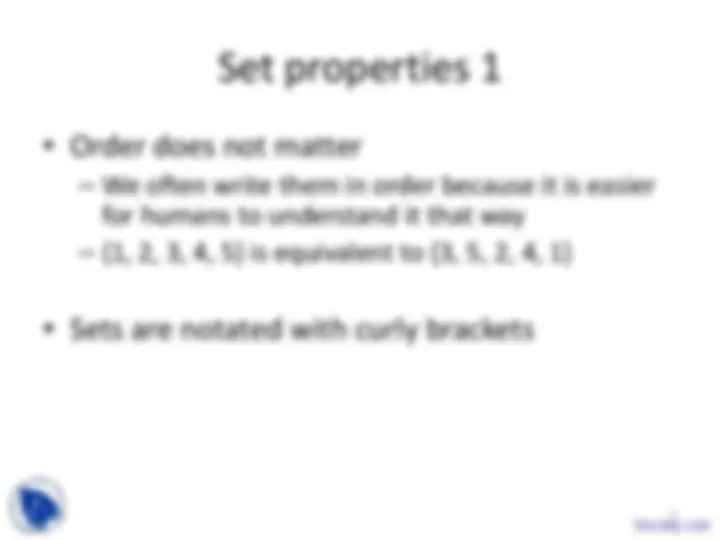
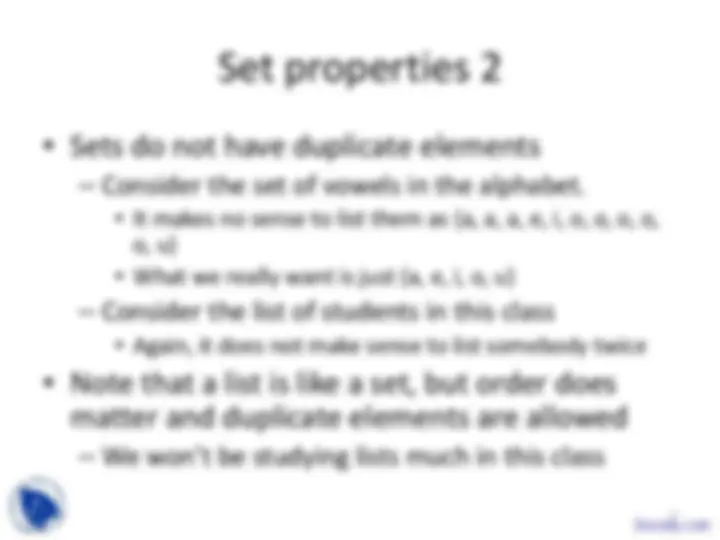
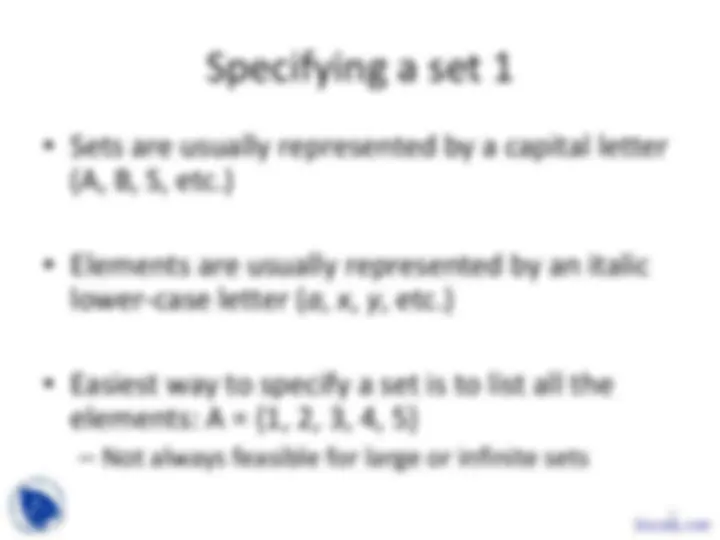
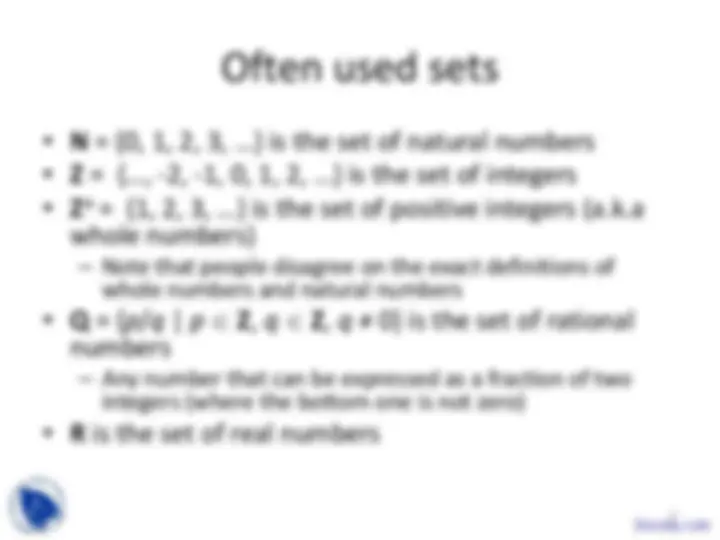
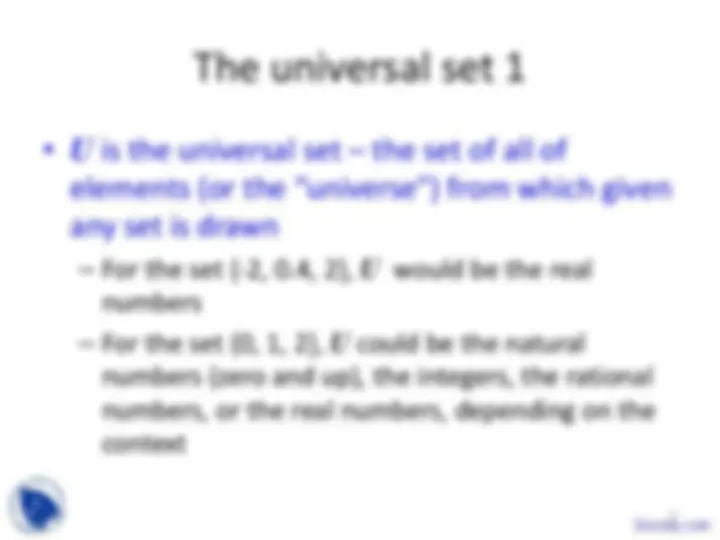
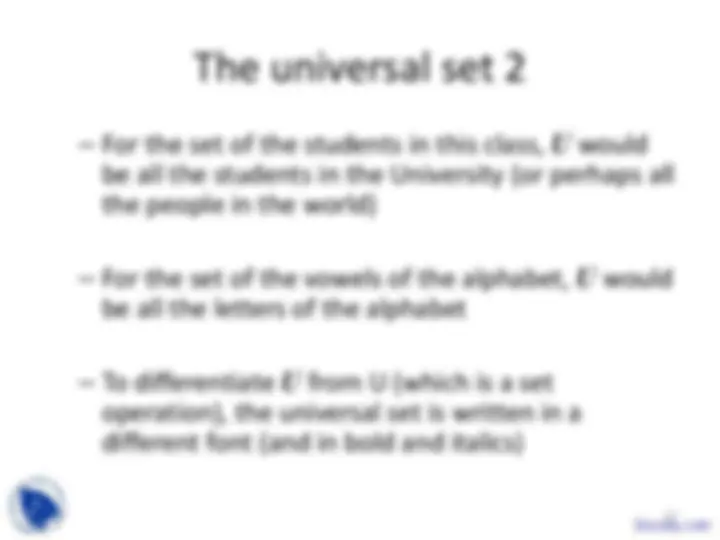
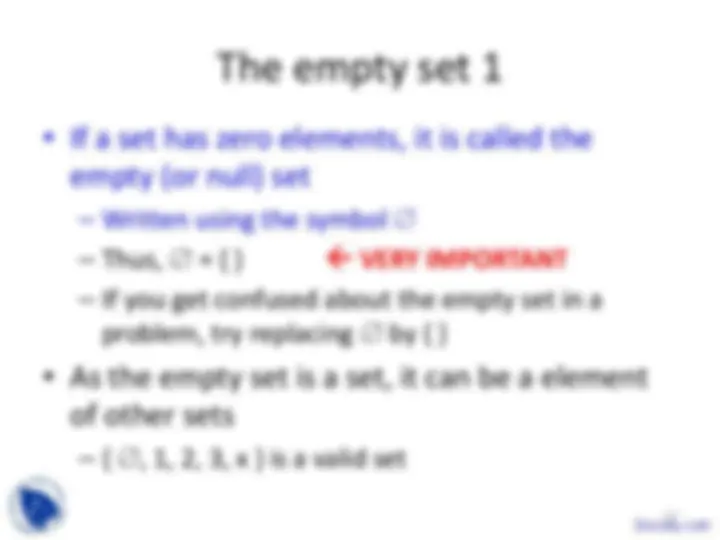
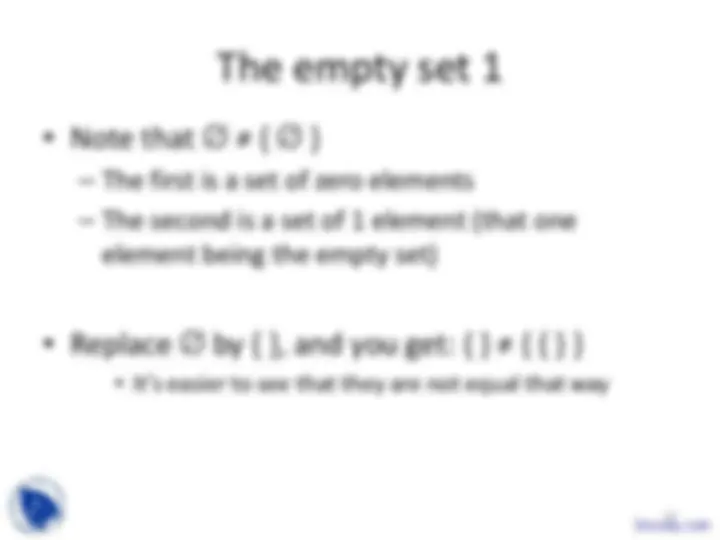
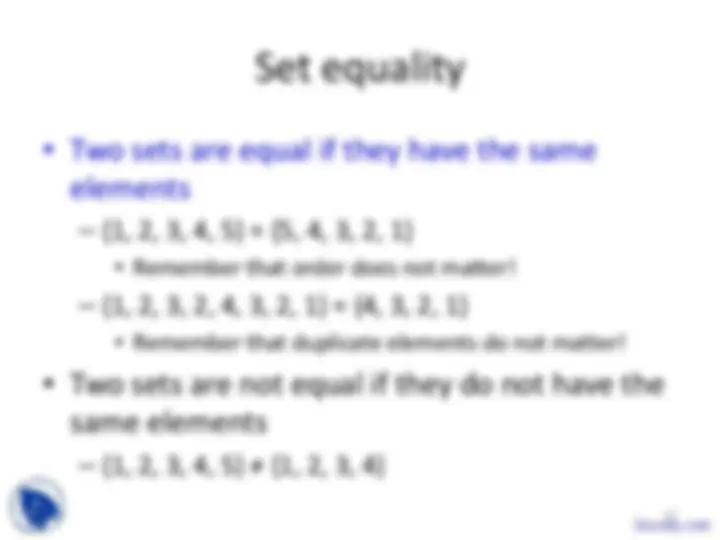
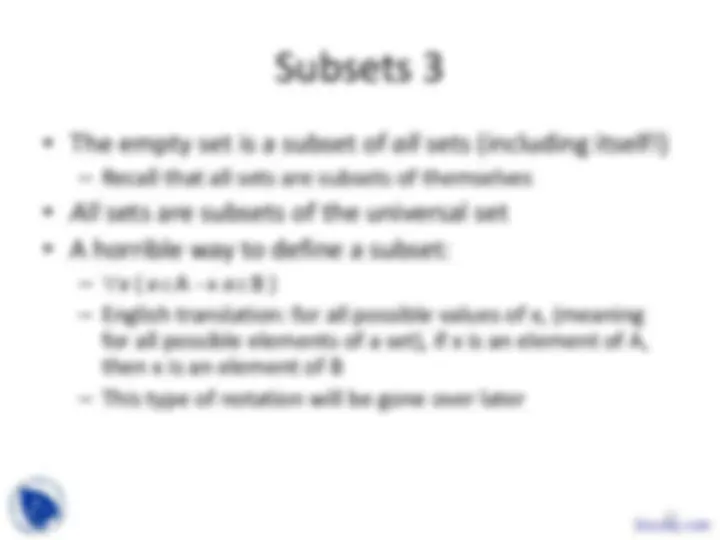
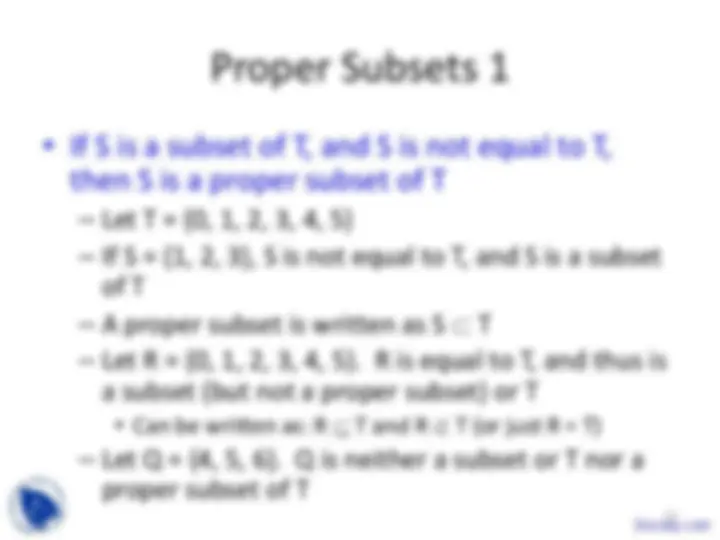
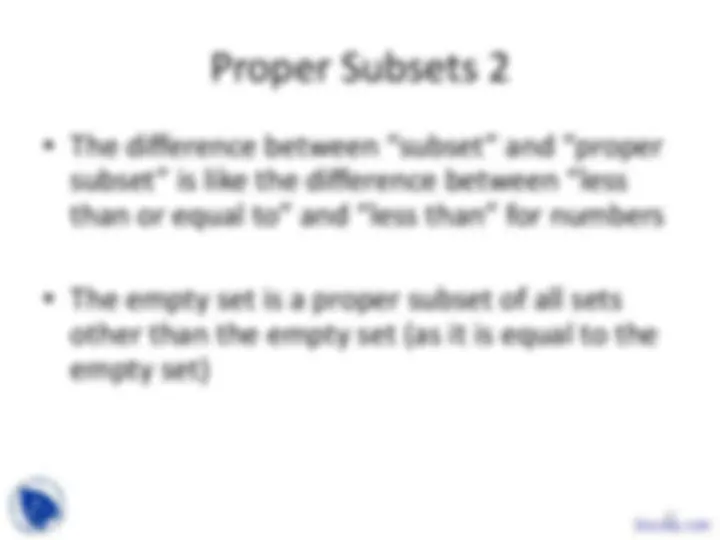
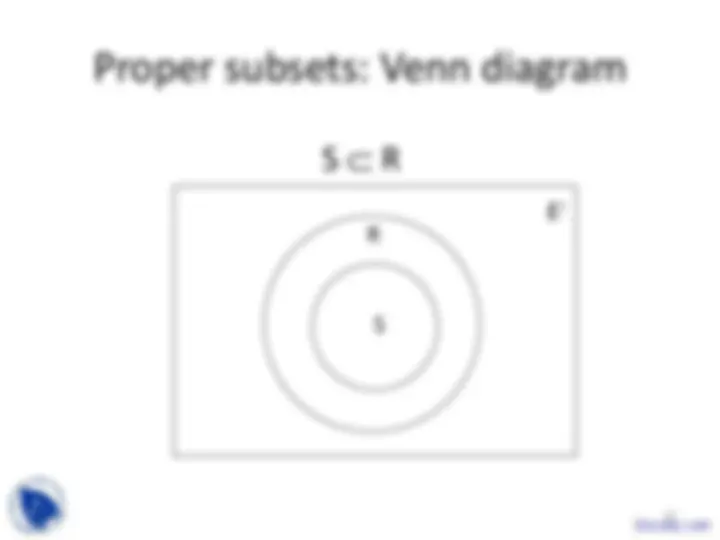
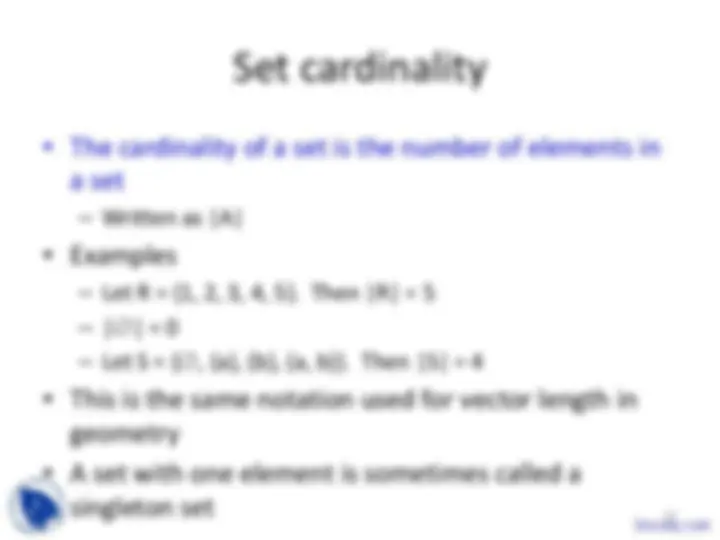
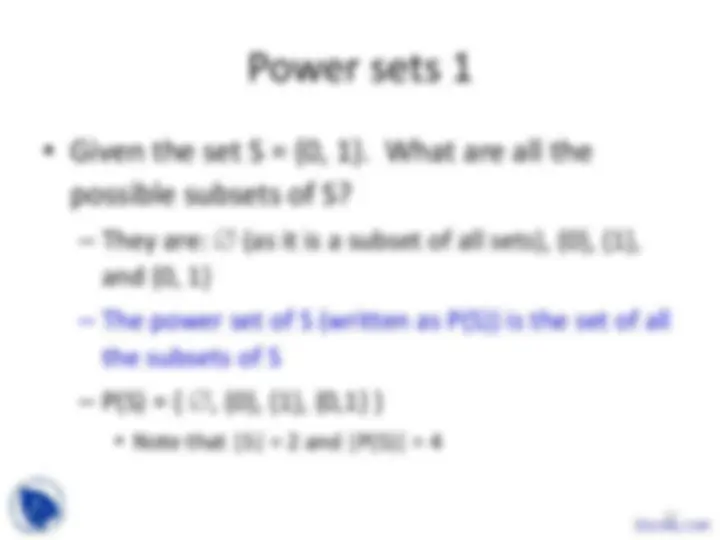
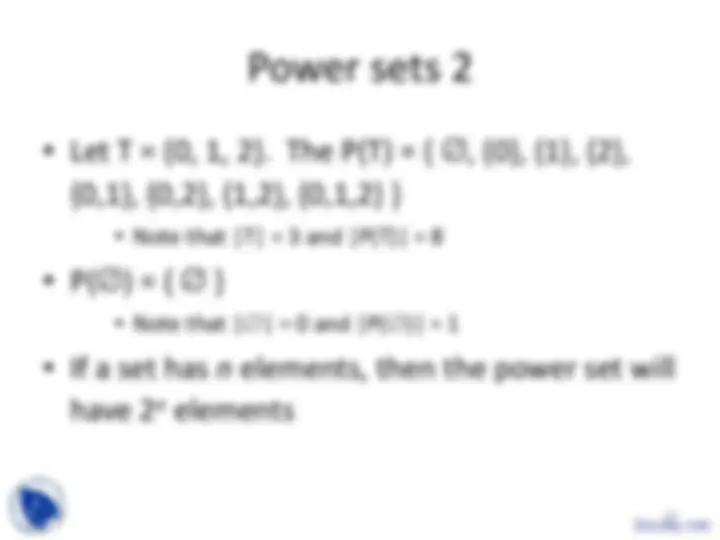
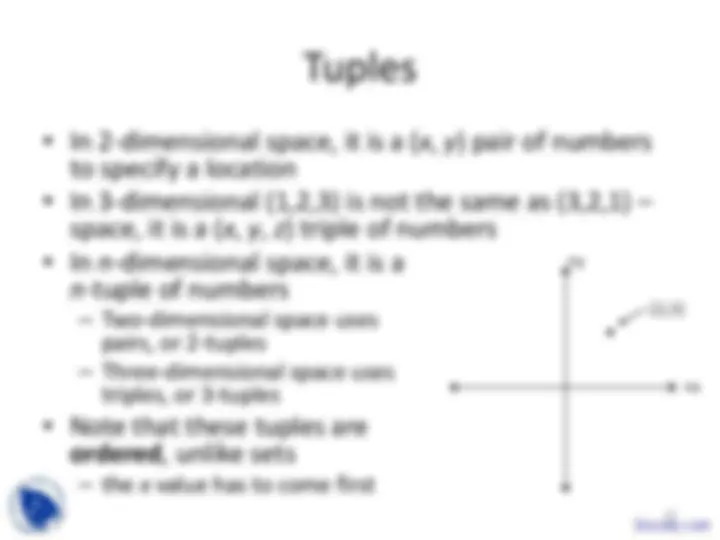
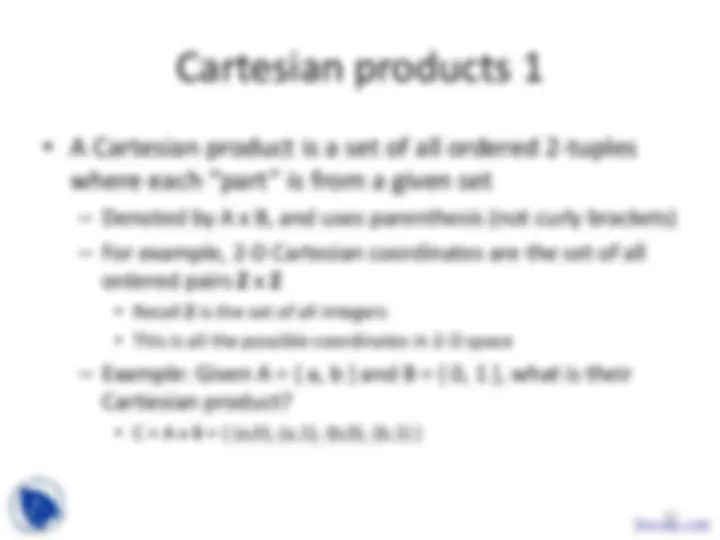
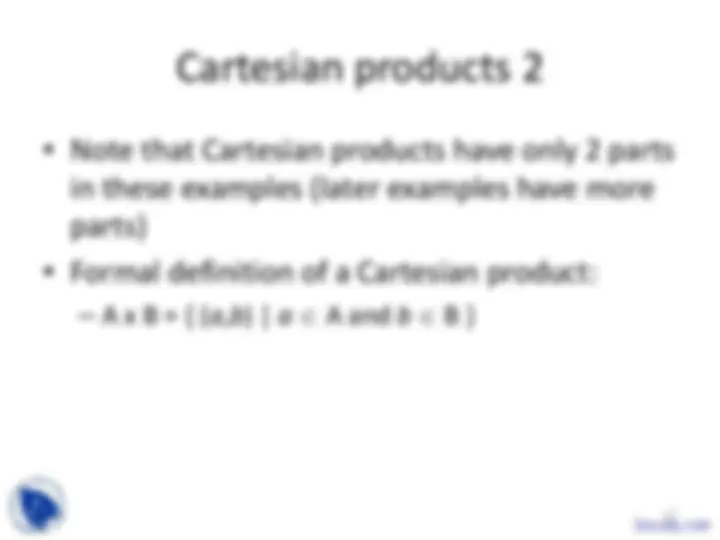
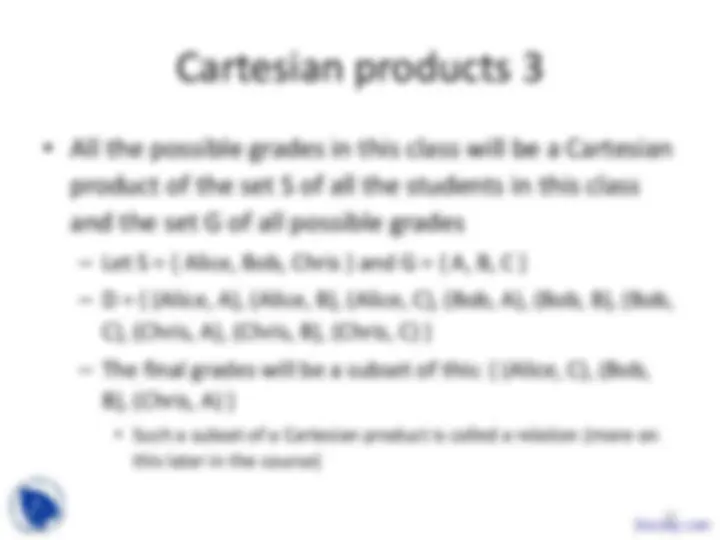
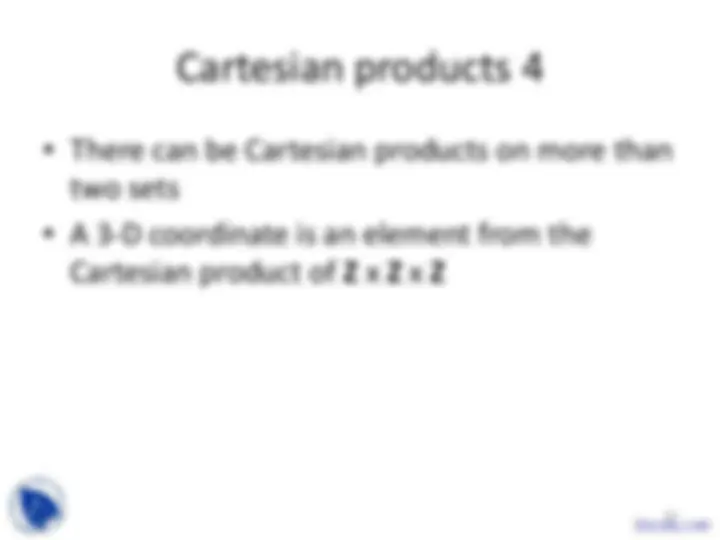


Study with the several resources on Docsity

Earn points by helping other students or get them with a premium plan


Prepare for your exams
Study with the several resources on Docsity

Earn points to download
Earn points by helping other students or get them with a premium plan
Community
Ask the community for help and clear up your study doubts
Discover the best universities in your country according to Docsity users
Free resources
Download our free guides on studying techniques, anxiety management strategies, and thesis advice from Docsity tutors
During the study of discrete mathematics, I found this course very informative and applicable.The main points in these lecture slides are:Set Properties, Non-Related Elements, Infinite Sets, Set-Builder Notation, Often Used Sets, Set of Real Numbers, Fraction of Two Integers, Universal Set, Venn Diagrams, Sets of Sets, Empty Set, Set Equality
Typology: Slides
1 / 29

This page cannot be seen from the preview
Don't miss anything!






















1
2
4
5
7
8
10
11
the set of all vowels in the alphabet
are usually not written in a Venn diagram
a e^ i o u
b c^ d f g (^) h j k l m n p q r s t v w x y z
U S
13
14
16
set T, then S is a subset of T
S ⊆ T
17
19
20